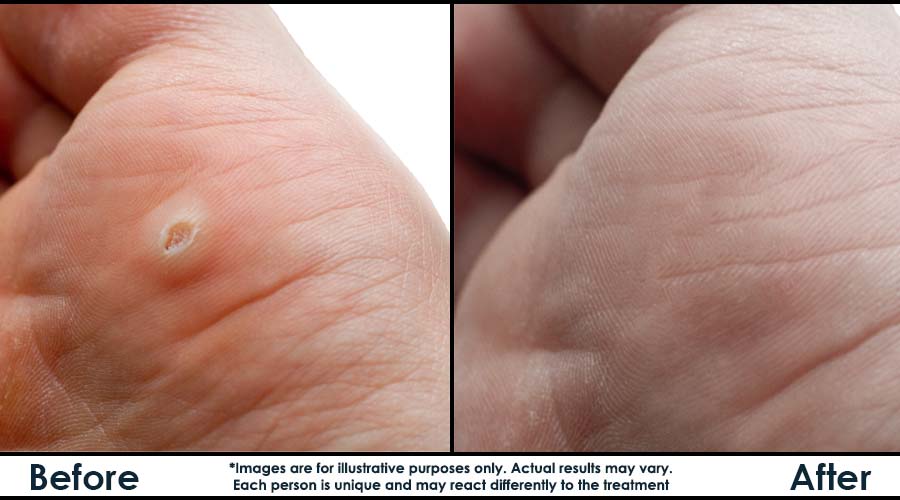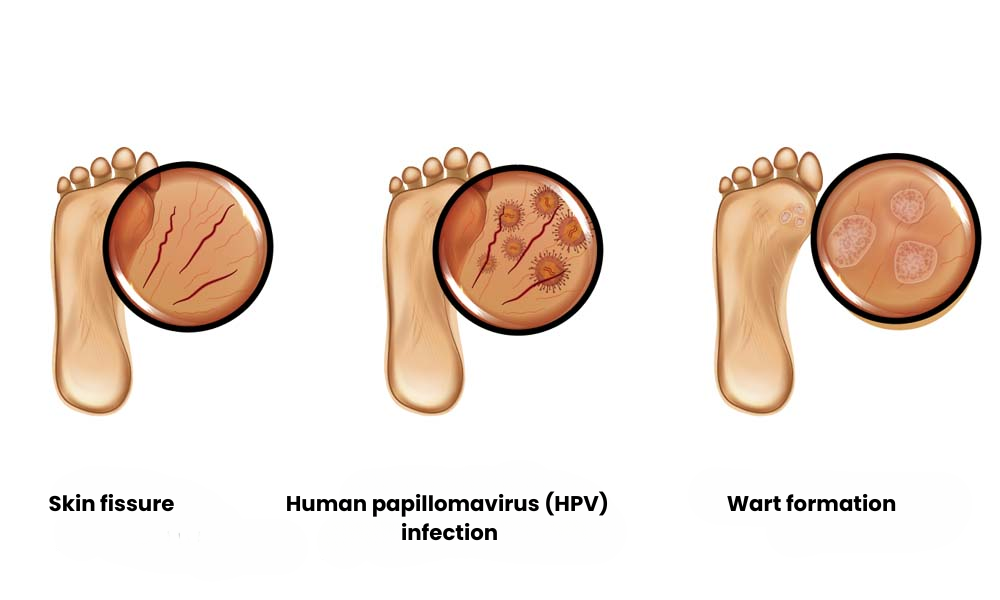Wart Removal
Warts can appear anywhere on the skin and we specialize in the safe and effective removal of skin lesions
Post-Treatment Results for Wart Removal

Our Approach to Treating Warts
1
Consultation and lesion analysis
2
Determine the most appropriate treatment plan based on the type and severity of the wart
3
Wart removal – may require touch-up sessions to achieve complete results
What are Warts?
Warts are small, well-defined skin growths that develop in the epidermis, the outermost layer of the skin. While they can appear anywhere on the body, they are most commonly found on the hands, feet, and face.
Warts are caused by the human papillomavirus (HPV), which infects skin cells and causes them to grow abnormally, creating a rough, raised lesion. There are several types of warts, depending on the strain of HPV involved.
Highly contagious, warts can spread easily through direct skin contact or via shared surfaces and objects. The virus can survive for over a week on surfaces and enters the skin through tiny, often invisible, micro-cuts. Once introduced, HPV may remain dormant before a wart appears — especially if the immune system does not detect or eliminate it quickly.
Warts can become tender or painful over time, particularly in areas exposed to pressure or friction. While they often affect children and adolescents, adults can also develop them. Although many warts eventually disappear on their own, professional removal is recommended to prevent spreading, improve comfort, and accelerate healing.
The Main Types of Warts
- Common wart: It is found at the knees, elbows, feet, toes, hands and fingers. It takes the form of a rough bump and is of a greyish color or one that is similar to that of the skin.
- Plantar wart: It is found at the level of the soles of the feet. May be painful.
- Filiform wart: It is found around the mouth and eyes.
- Digital wart: It is found on the scalp. They are often many present in the same place.
Stages of Wart Formation

Our Approach to Wart Removal
- Comprehensive clinical examination
- Accurate diagnosis of skin lesions
- Biopsy when necessary
- Safe and effective removal procedures



